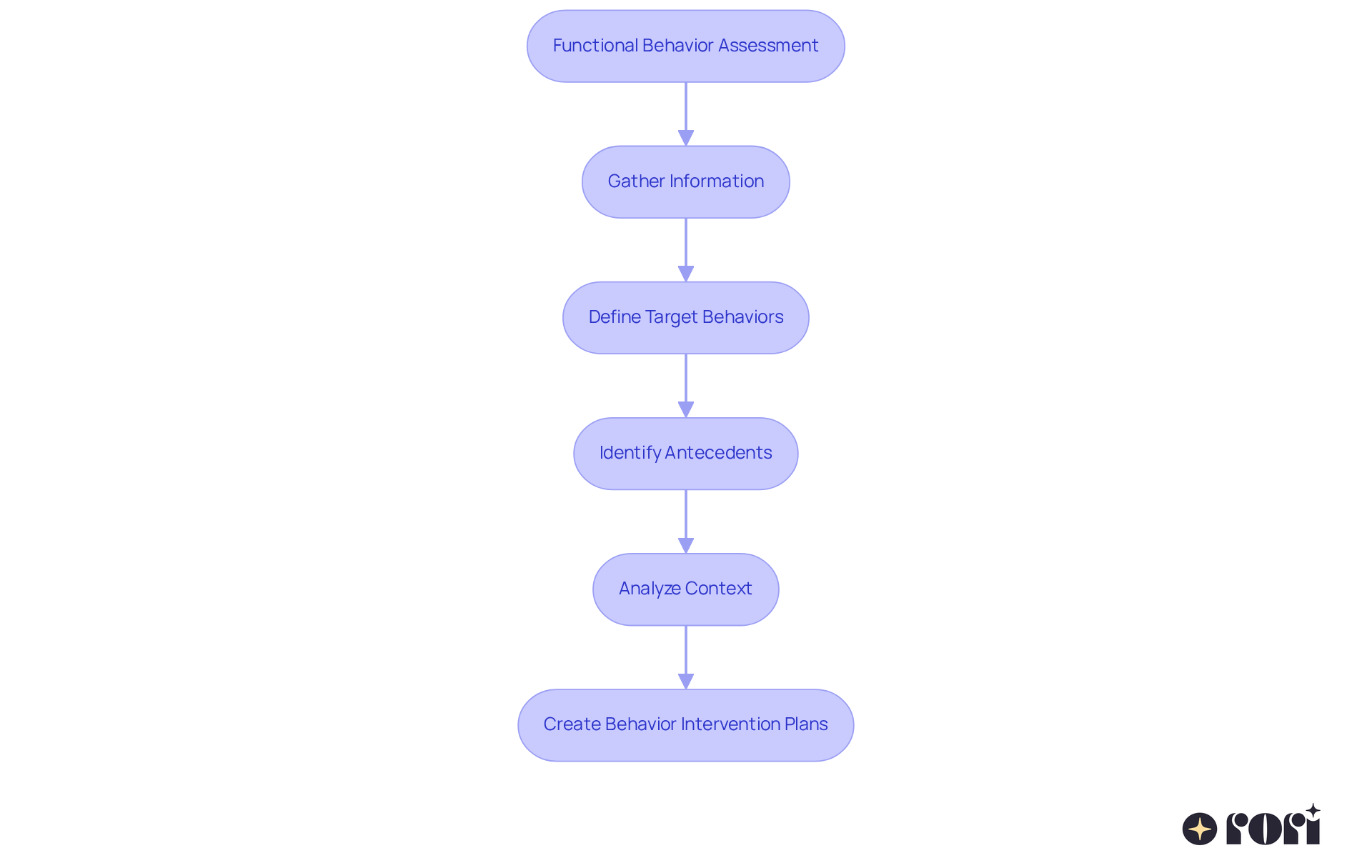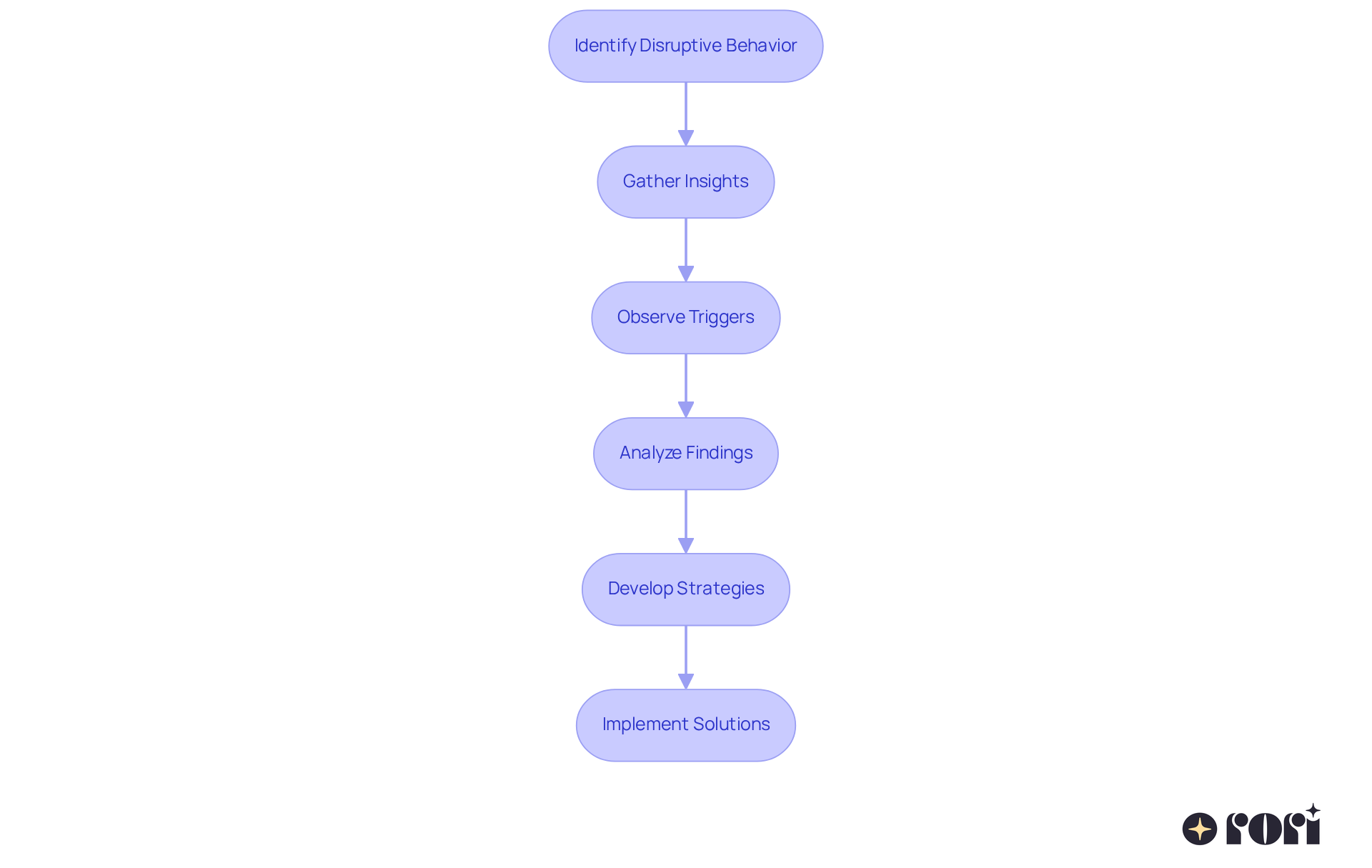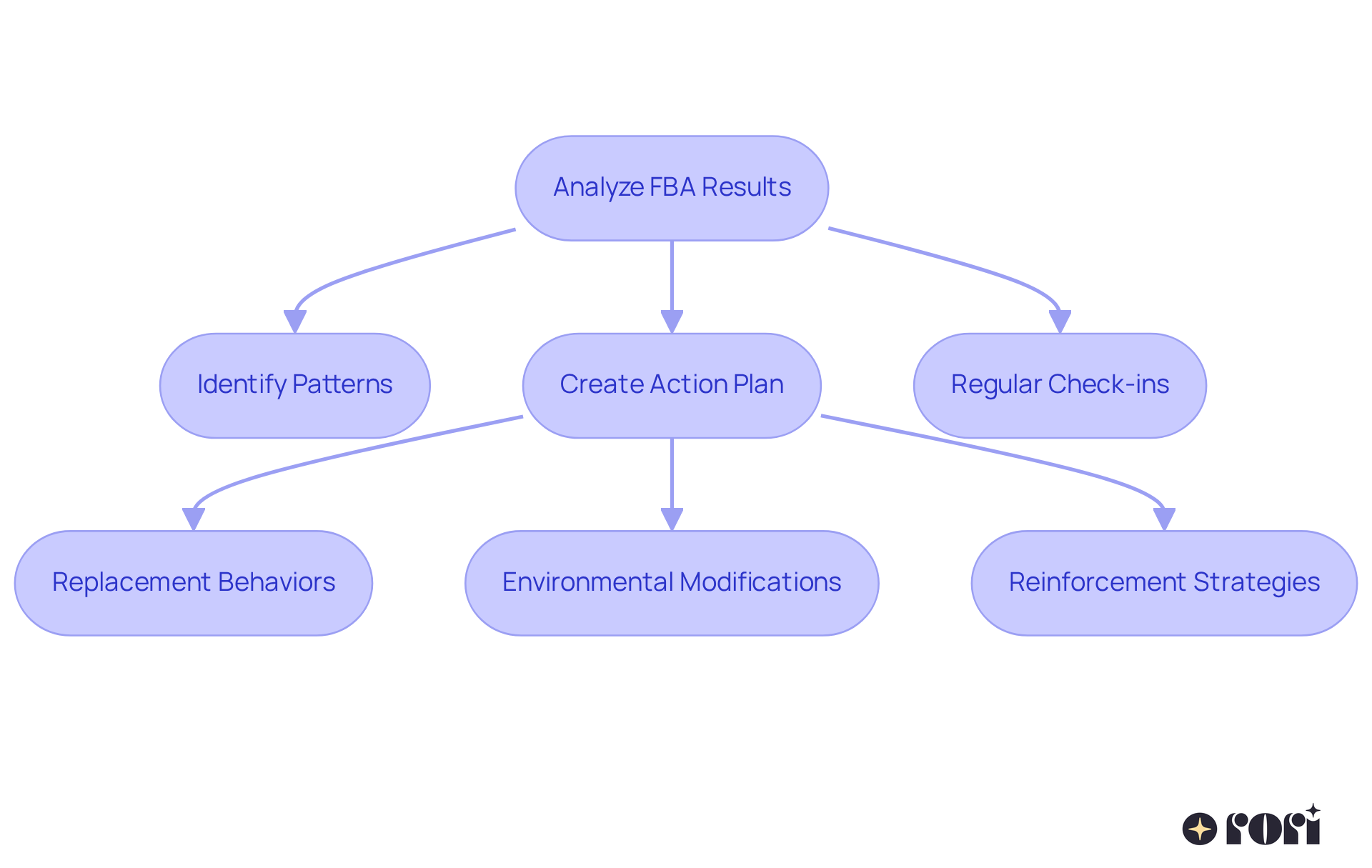This article is a friendly guide for parents on how to conduct a Functional Behavior Assessment (FBA). Understanding and addressing challenging behaviors in children, especially those on the autism spectrum, is essential. Here, we’ll walk through the steps of identifying behaviors, gathering information, analyzing data, and creating targeted action plans. It’s all about working together with caregivers and professionals to encourage positive behavioral changes.
Let’s dive into the process! First, it’s important to recognize specific behaviors that may be concerning. Gathering information from various sources, like teachers and therapists, can provide a fuller picture. Analyzing this data helps in understanding the root causes of these behaviors, which is crucial for developing effective action plans.
Remember, collaboration is key! By joining forces with professionals, you can create a supportive environment that fosters growth and understanding. We’re here to help you every step of the way! So, let’s explore this together and make a positive impact on your child's behavior.
Understanding the complexities of children's behavior can feel overwhelming for parents, especially when navigating the unique challenges of those on the autism spectrum. A Functional Behavior Assessment (FBA) is a valuable tool in this journey, offering insights that empower caregivers to create tailored strategies for positive change.
But what happens when traditional approaches don’t quite hit the mark? How can parents ensure they’re truly supporting their child’s individual needs?
Let’s dive into the step-by-step process of conducting an FBA together, with practical examples and actionable insights that can turn challenging behaviors into opportunities for growth. We’re here to help you every step of the way!
An example of FBA is a Functional Behavior Assessment, which is a systematic method designed to uncover the reasons behind challenging behaviors in young individuals, especially those on the autism spectrum. This process involves gathering information through various techniques, like observations and interviews, to pinpoint the triggers and outcomes that influence a child's behavior. An example of FBA is to create effective strategies that are tailored to each child's unique needs, fostering positive changes and enhancing their overall well-being.
Research shows that many young individuals greatly benefit from FBAs. These assessments offer valuable insights that empower parents and professionals to work together on personalized strategies that support development and learning. An example of FBA includes key components such as defining target behaviors, identifying antecedents, and analyzing the context in which these behaviors occur.
Behavioral specialists highlight the importance of an example of FBA, as it lays the groundwork for creating effective Behavior Intervention Plans (BIPs). Successful FBAs demonstrate how challenging behaviors can transform into opportunities for growth, enabling individuals with autism to thrive in various settings.
At Rori Care, our qualified behavior analysts design personalized plans that feature measurable objectives and evidence-based strategies. We ensure ongoing assessment and adjustments to meet each individual's needs. This continuous evaluation not only boosts the effectiveness of interventions but also empowers caregivers by involving them in the process. Together, we equip them with the knowledge and tools to support their child's behavioral goals.
Moreover, our innovative approach combines personalized therapy with cutting-edge AI technology, allowing for automatic progress report creation. This advancement frees up 50% more time for treatment, enhancing the overall efficiency of ABA therapy. Let’s explore this together! We’re here to help you every step of the way!

Let’s consider a child who often disrupts his math class by calling out answers and skipping assignments. This situation can be quite common, right? An example of FBA, or Functional Behavioral Assessment, starts by gathering insights from teachers and parents about when and why these behaviors happen. Through observations, it becomes clear that he tends to yell out when he feels anxious about being called on. Understanding this is key! It turns out that his yelling is a way to escape the pressure of completing his work.
By realizing this, the team can come up with strategies to reduce his anxiety and provide him with alternative ways to participate in class. For instance, they might suggest that he uses a signal to let the teacher know he wants to answer a question. Isn’t that a great idea? Plus, Rori Care's conduct care engine makes this process even smoother by analyzing behaviors and creating automatic progress reports for clinicians. This tool not only gives caregivers helpful insights but also supports informed decision-making, ultimately leading to better behavioral outcomes for children like Alex. We’re here to help you every step of the way!

Identify the Conduct: Let’s start by clearly defining the specific action of concern. An example of FBA is when 'Alex yells out answers during math class.' This clarity is crucial for effective assessment and helps us understand what’s happening.
Gather Information: Next, it’s important to collect data from multiple sources, including teachers, parents, and direct observations. Keeping a conduct log can assist in monitoring occurrences and provide a thorough perspective of the actions.
Conduct Interviews: Engaging with individuals who interact with the child regularly is key. These discussions can uncover insights into the context and triggers of the actions, enriching the evaluation process and helping us see the bigger picture.
Analyze Data: Now, let’s examine the collected data for patterns. Determine when and where the conduct takes place, along with any antecedents and consequences. This analysis is essential for comprehending the function of the actions and understanding what might be behind them.
Develop Hypotheses: Based on the data analysis, it’s time to formulate hypotheses regarding the function of the actions. For instance, 'Alex yells to avoid completing his work.' This step is vital for guiding intervention approaches and figuring out how best to support him.
Create an Action Plan: Finally, work with experts to develop targeted strategies that address the identified conduct. Focus on teaching alternative actions and adjusting the environment as needed to facilitate positive change. Remember, we’re here to help you every step of the way!

After completing the Functional Behavior Assessment (FBA), it’s really important to take a good look at the example of FBA results. By identifying patterns in the data, we can uncover the reasons behind certain behaviors. For example of FBA, if we notice that Alex tends to yell when faced with challenging tasks, it could mean he’s trying to avoid those situations.
From this analysis, we can create an effective action plan that includes some key components:
It’s essential to regularly check in on the action plan and make adjustments based on Alex’s progress. This way, we ensure that the plan stays effective and meets his evolving needs, creating a supportive learning environment. Research shows that 90% of individuals see amazing progress when the recommended hours are fully implemented, especially with active caregiver participation. This really highlights how important family involvement is in the action plan process.
Moreover, the personalized intervention plans crafted by skilled analysts emphasize ongoing assessment and adjustment, making sure the strategies align with what Alex needs. Keeping track of data, like how often and how long certain behaviors occur, is crucial for evaluating how well the interventions are working and for making necessary changes.
By empowering caregivers with ABA principles and strategies, we not only enhance support but also improve decision-making and behavioral outcomes for children. Let’s explore this together and make a positive difference in Alex’s journey!

Understanding and implementing a Functional Behavior Assessment (FBA) is crucial for parents and educators who want to tackle challenging behaviors in children, especially those on the autism spectrum. This systematic approach not only uncovers the reasons behind these behaviors but also sets the stage for personalized interventions that encourage positive change and enhance overall well-being.
This article offers a friendly, step-by-step guide for conducting an FBA. It emphasizes the importance of gathering data, analyzing behaviors, and developing actionable plans. Key components, like:
are essential for understanding and effectively addressing the needs of children like Alex. By actively involving caregivers in the process, the chances of successful outcomes increase significantly.
In conclusion, embracing the FBA process empowers both parents and professionals to create supportive environments that nurture growth and learning. As children navigate their educational journeys, the insights gained from FBAs can turn challenging behaviors into opportunities for development. By prioritizing ongoing assessment and collaboration, we can make meaningful behavioral change a reality, paving the way for brighter futures for children in need of specialized support. Let’s explore this journey together!
What is a Functional Behavior Assessment (FBA)?
A Functional Behavior Assessment (FBA) is a systematic method designed to uncover the reasons behind challenging behaviors in young individuals, particularly those on the autism spectrum. It involves gathering information through techniques like observations and interviews to identify the triggers and outcomes that influence a child's behavior.
How do FBAs benefit young individuals?
FBAs provide valuable insights that empower parents and professionals to collaborate on personalized strategies that support development and learning, ultimately fostering positive changes and enhancing the overall well-being of young individuals.
What are the key components of an FBA?
Key components of an FBA include defining target behaviors, identifying antecedents, and analyzing the context in which these behaviors occur.
How do FBAs contribute to Behavior Intervention Plans (BIPs)?
FBAs lay the groundwork for creating effective Behavior Intervention Plans (BIPs) by demonstrating how challenging behaviors can be transformed into opportunities for growth, enabling individuals with autism to thrive in various settings.
What services does Rori Care provide regarding FBAs?
Rori Care offers personalized plans designed by qualified behavior analysts, which feature measurable objectives and evidence-based strategies. They ensure ongoing assessment and adjustments to meet each individual's needs.
How does Rori Care involve caregivers in the FBA process?
Rori Care empowers caregivers by involving them in the FBA process, equipping them with the knowledge and tools to support their child's behavioral goals.
What innovative approach does Rori Care use in their therapy?
Rori Care combines personalized therapy with cutting-edge AI technology, allowing for automatic progress report creation, which increases the efficiency of ABA therapy by freeing up 50% more time for treatment.